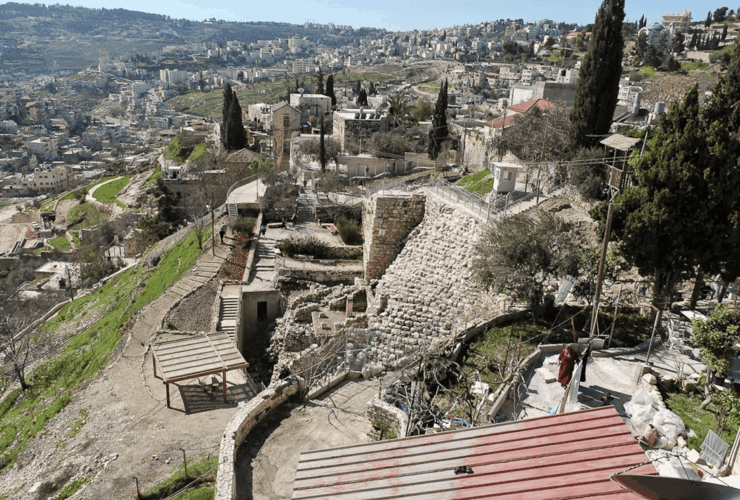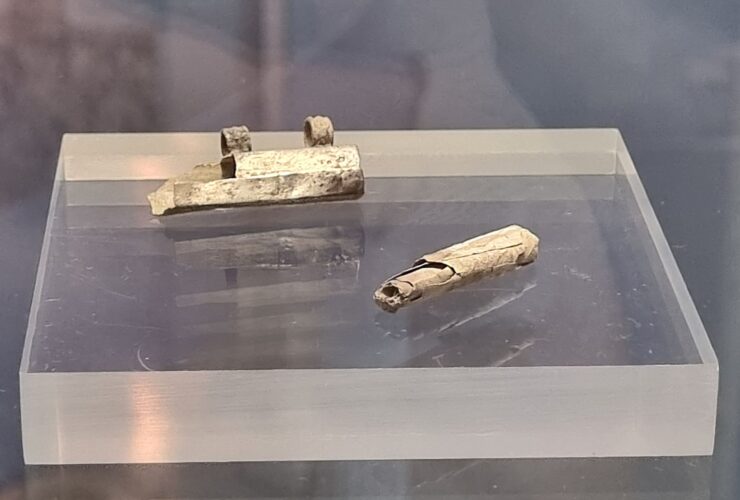The Antonia Fortress in Jerusalem is thought to have been Herod the Great’s first massive building project. He would have completed it sometime before 31BC because he named it after his friend and ally Marc Antony, who was defeated in battle in 31BC. After this defeat, Herod had to decisively maneuver to stay on the winning side of the world’s shifting politics and would not have named anything after his disgraced friend.
The Antonia Fortress was built close to the Temple Mount in Jerusalem and is believed to have incorporated the earlier Baris fortress built by the Hasmonean rulers. The location of this fortress was just to the Northwest of the Temple Mount and served to protect the city from its naturally weak northern perimeter. When Herod constructed the Antonia, he had not yet expanded or rebuilt the Temple Mount, but he surely must have had at least preliminary plans. Herod built the Antonia on a natural outcropping of rock that was higher than the Temple Mount. This fortress would guard the city, and the Temple Mount. It was roughly square in shape with a tower at each corner. Its southeastern tower that overlooked the Temple was built 20 cubits taller than the other towers, giving a better view of the Temple Mount.
“And as he could not learn the facts because of the uproar, he ordered him to be brought into the barracks.”
Acts 21:34
According to the first century historian Josephus, the Antonia intersected Herod’s renovated Temple mount, and staircases descending from it led to the north and west covered porticoes of the Temple. This makes sense because when Herod renovated the Temple, he extended the mountain’s area to the north, west, and south closing the gap between the original temple mount and the Antonia fortress. Josephus also tells us that in the first century AD, a cohort of Roman soldiers were permanently stationed in the Antonia. Its multiple rooms, courtyards, and Roman baths would have easily facilitated them. These details are all very important to students of the Bible because they enable us to identify the Antonia as the place of Paul’s Jerusalem imprisonment.
Acts 21 records Paul being confronted by an angry mob who were convinced he had brought a Gentile into the Temple. They dragged him out of the Temple complex and began to beat him, but the noise of the crowd alerted the Roman troops, who according to Josephus lived in the Antonia adjacent to where this mob found Paul. The Roman commander intervened and saved Paul by arresting him, and when he couldn’t make sense of the mob’s accusations, he ordered Paul taken to the barracks, when they reached the steps, the soldiers had to carry Paul up them because the crowd was violently trying to take him back, or kill him. The Roman barracks should historically be seen as the Antonia, and the Biblical detail of having to go upstairs to reach them seems to verify this.

Corie Bobechko is a daily co-host, speaker, and writer of Bible Discovery. She also hosts a YouTube channel that shows how history and archaeology prove the Bible. Her heart for seekers and skeptics has led her to seek truth and share it with others. Corie also has a Bachelor of Theology from Canada Christian College.
“A New Reconstruction of Paul’s Prison,” Biblical Archaeology Review 35.1 (2009): 44–51, 71.
https://www.baslibrary.org/biblical-archaeology-review/35/1/9






